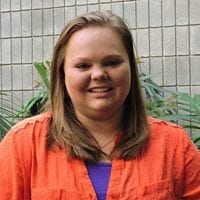
Carotenoids profiling and quantitative trait loci (QTLs) detection in a S. lycopersicum × S. galapagense recombinant inbred lines populations
Project Summary
Many people suffer from malnutrition due to lack of access to quality food, especially in developing countries. Carotenoids accounting for the red, orange, and yellow colors of tomato fruits, serve as important nutritional components such as pro-vitamin A (mainly β-carotene, orange color) and antioxidants (mainly lycopene, red color). Being able to map quantitative trait loci (QTL) for desired carotenoids holds the potential to grow more nutritious tomatoes and other fruits. We used a recombinant inbred line population derived from a cross between S. lycopersicum (a cultivated red fruit tomato) and S. galapagense (a wild orange fruit tomato). Ripe fruits were harvested and used for carotenoid extraction and RNAseq analysis. Carotenoids were extracted using methanol, tetrahydrofuran and petroleum ether and resolved by high performance super-critical fluid chromatography. As expected, the main carotenoids were β-carotene in S. galapagense and lycopene in S. lycopersicum. Some lines accumulated carotenoids in similar levels to one of the parents, but others accumulated higher levels of upstream or downstream compounds, such as phytoene or lutein, respectively. QTL analysis revealed a large-effect QTL for both lycopene and β-carotene on chromosome 6 located six genes from the lycopene beta-cyclase (SILYCB) gene. SILYCB is the enzyme converting lycopene to β-carotene. Minor QTL for β-carotene was located on chromosome 2. QTLs were found also for phytoene, lutein, and some unidentified carotenoids. This work demonstrates the power of high resolution QTL analysis and while the major QTL is of known function it can bear the potential for mining genes that underline minor QTLs.
My Experience
In the lab I work in back in Clemson, I did a lot of genetics work. This summer, I learned new techniques about how a biochemistry lab is run, that I am excited to bring back to my lab when we start getting to more biochemistry processes. Personally, I’ve gained a lot of new skills and life experiences that I would not have learned anywhere else. It gave me an insight into what I want to do with my life and the process I need to take to get there. Professionally, I gained confidence in speaking to others about my research, especially my science peers and professors. Academically, I learned I do want to go back to school and get my Ph.D. in plant breeding, however I want to spend a few years working under someone and getting the basics down. I want to thank the PGRP internship for this insightful and exciting summer
